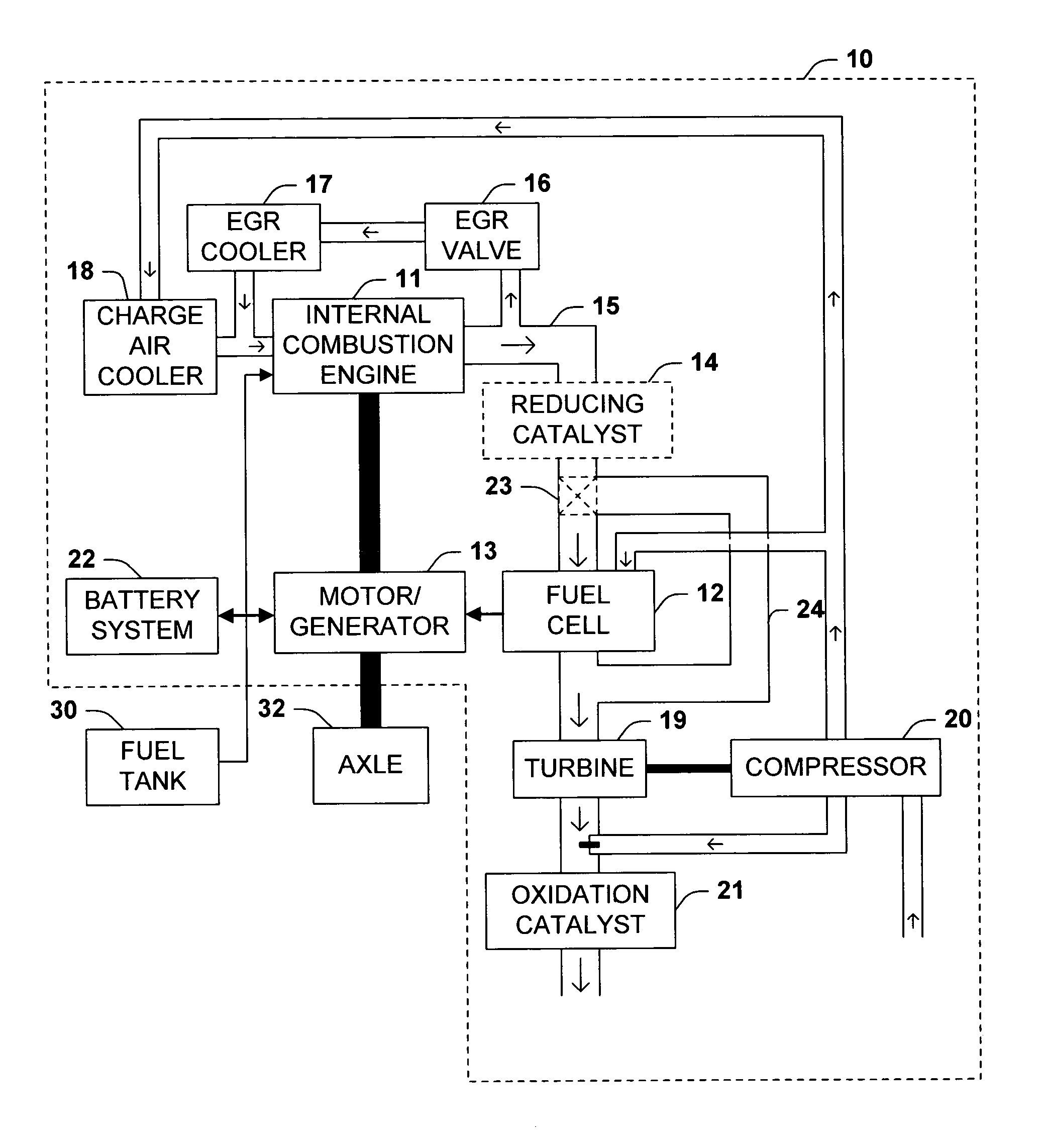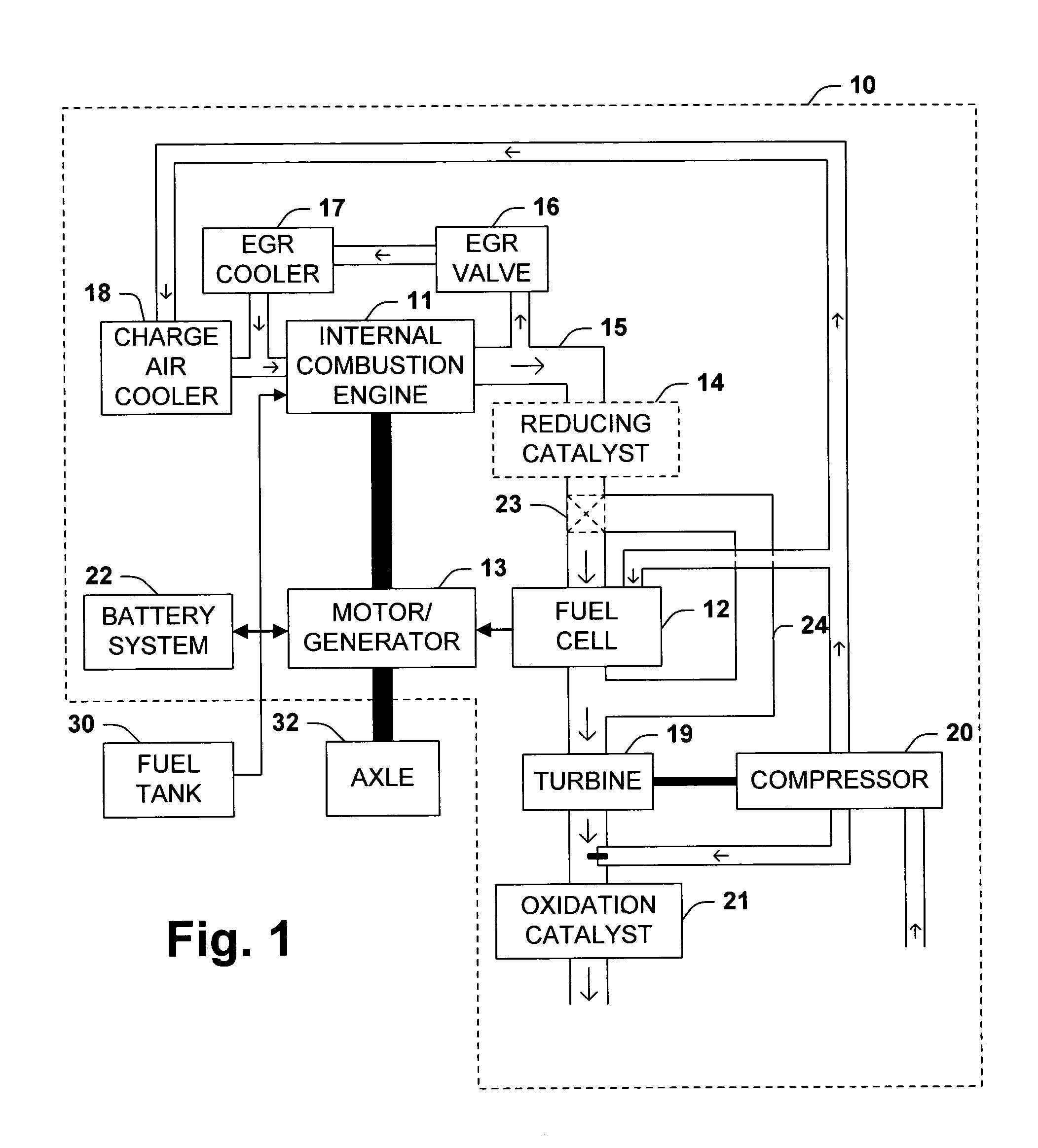Clean power system
a power system and clean technology, applied in the field of power generation systems, can solve the problems of excessive effort, exhaust is too oxygen-rich for three-way catalysts to be effective, and emissions from vehicles with internal combustion engines
- Summary
- Abstract
- Description
- Claims
- Application Information
AI Technical Summary
Benefits of technology
Problems solved by technology
Method used
Image
Examples
Embodiment Construction
[0020]FIG. 1 is a schematic illustration of a power generation system 10 exemplifying several aspects of the present invention. The power generation system 10 comprises an internal combustion engine 11, a fuel cell 12, and a motor / generator 13. The power generation system 10 is designed to couple with a fuel tank 30 and a vehicle axle 32.
[0021]The internal combustion engine 11 can be any type of internal combustion engine. A suitable engine can be, for example, a compression ignition engine or a spark ignition engine. The engine 11 can be designed for any particular type or types of hydrocarbon or oxygenated hydrocarbon fuel, including for example diesel, gasoline, natural gas, or methanol.
[0022]In one embodiment, the internal combustion engine 11 is operated in a manner that limits the NOx and particulate matter content of the exhaust. Any suitable method of operation can be used, depending on the particular limits. For example, some limits on NOx and particulate matter can be met ...
PUM
 Login to View More
Login to View More Abstract
Description
Claims
Application Information
 Login to View More
Login to View More - R&D
- Intellectual Property
- Life Sciences
- Materials
- Tech Scout
- Unparalleled Data Quality
- Higher Quality Content
- 60% Fewer Hallucinations
Browse by: Latest US Patents, China's latest patents, Technical Efficacy Thesaurus, Application Domain, Technology Topic, Popular Technical Reports.
© 2025 PatSnap. All rights reserved.Legal|Privacy policy|Modern Slavery Act Transparency Statement|Sitemap|About US| Contact US: help@patsnap.com


